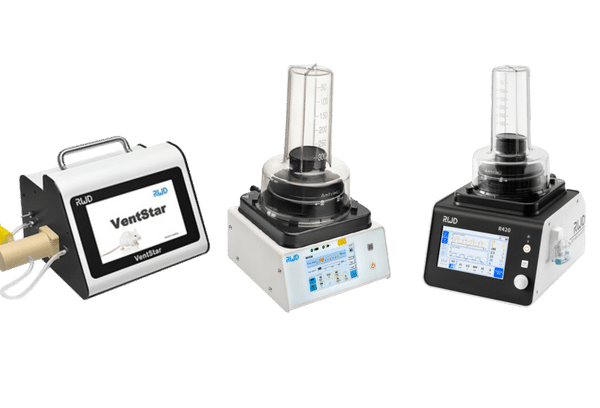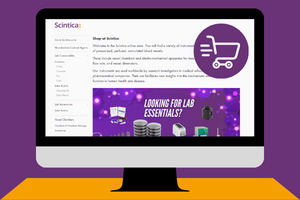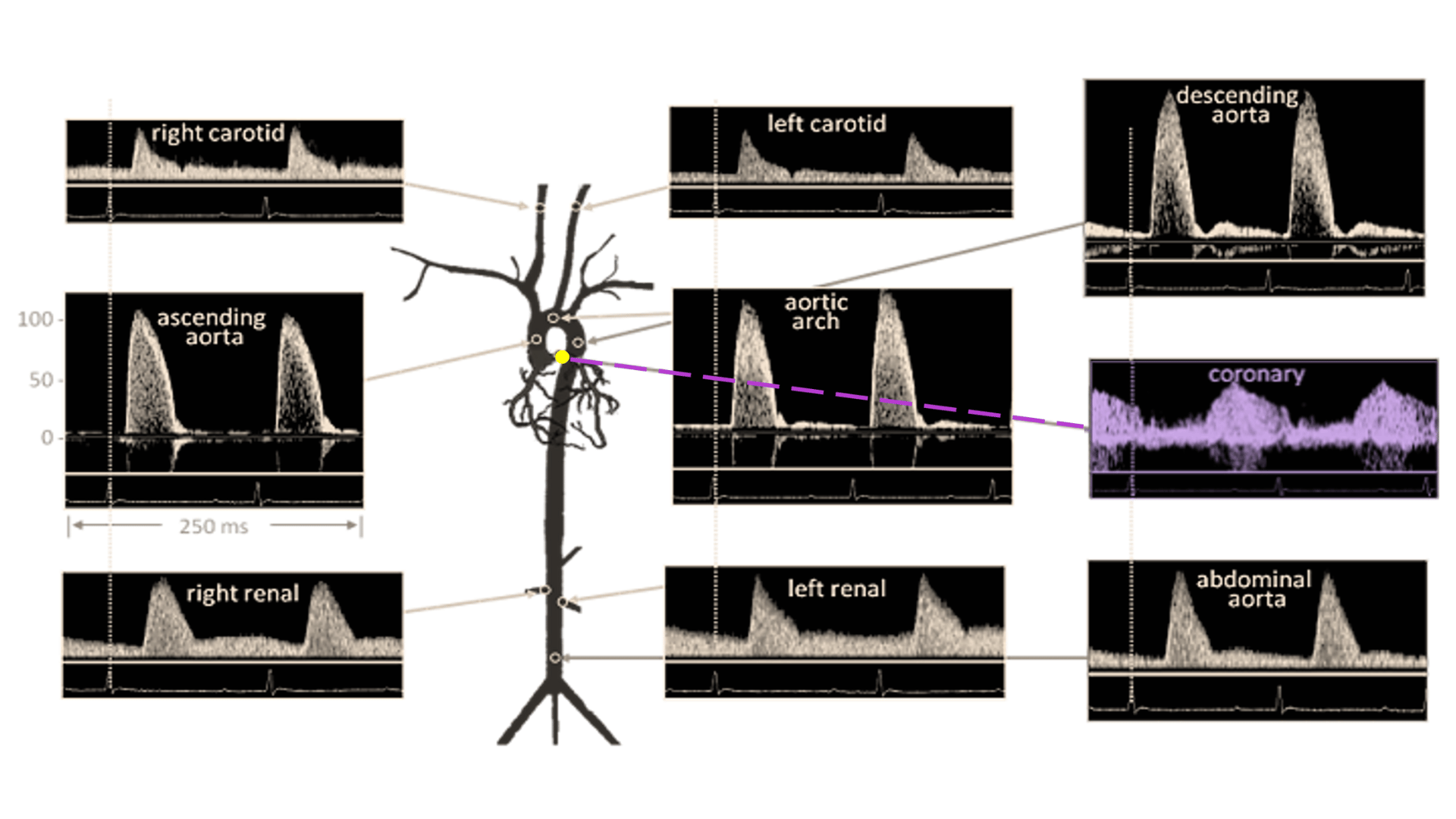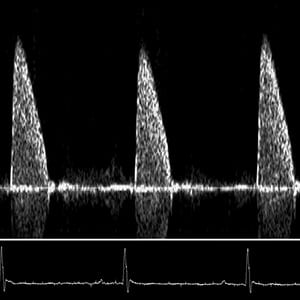System Overview
Mechanical ventilation The way to extend the respiratory power through instrument control or assisted breathing is called mechanical ventilation, that is, when animals cannot breathe autonomously, their ability to breathe autonomously is weak, and the breathing is interrupted manually, mechanical ventilation is needed to replace the autonomous breathing of animals.
Purpose:
• Maintain proper ventilation to make alveolar ventilation meet the needs of the body;
•Improve gas exchange function and maintain effective gas exchange;
• Reduce the work of respiratory muscles.
Mode:
• Controlled ventilation (CV): The ventilator completely replaces the breathing of experimental animals. Its respiratory rate and tidal volume are controlled by the ventilator, which belongs to complete respiratory support.
• Auxiliary ventilation (AV): The ventilator provides partial ventilation support when the experimental animals with spontaneous breathing inhale.
• Sigh mode (Sigh): It is a kind of ventilation mode in which deep breathing is carried out at intervals under the condition of routine
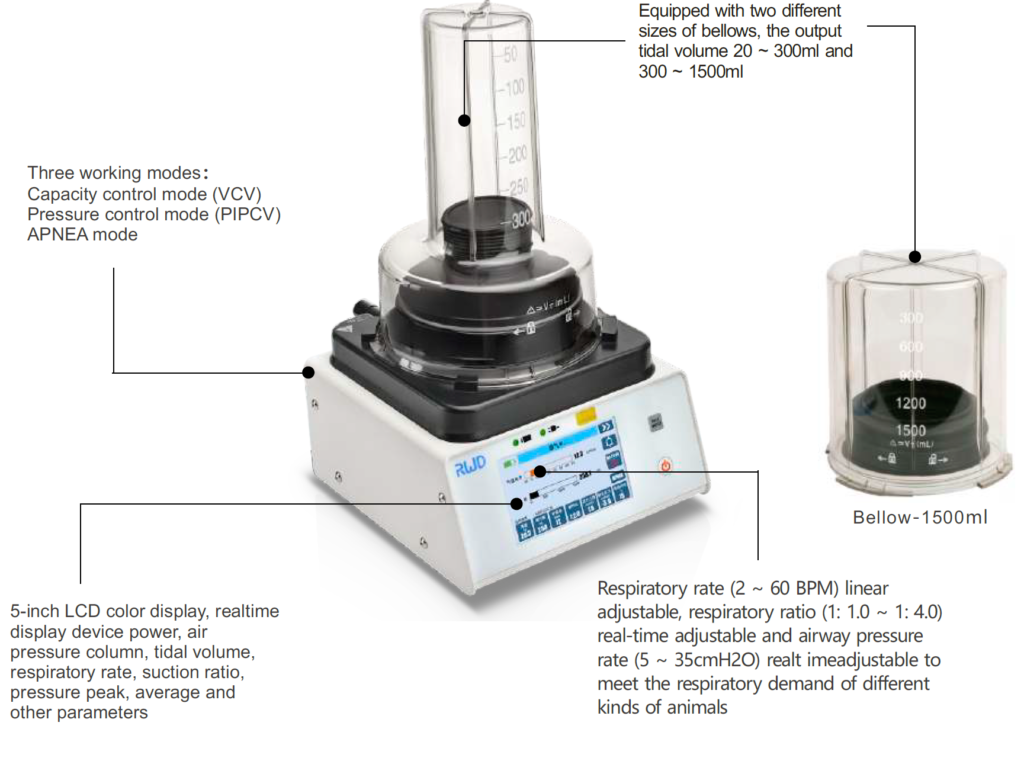
Applications
Thoracotomy (CV)
Open chest interrupts the animal’s spontaneous breathing, and the animal dies without breathing opportunity
Other surgery (AV)
Feed back the breathing state of animals in time, master the animal situation at any time, and improve the success rate of the experiment
Study on symptoms caused by ventilator (CV)
Modeling cannot be completed without using ventilator
Surgery with muscle relaxants (CV)
Muscle relaxants can reduce the ability of animals to breathe autonomously, and animals without ventilator are at risk of death
Valuable laboratory animals (AV)
The ventilator can effectively ensure the survival rate of experimental animals and reduce the cost
Respiratory failure modeling (CV)
The survival rate of animals without ventilator cannot be guaranteed
Critical first aid (CV)
Oxygen supply cannot be guaranteed without ventilator, and the survival rate of animals is not high
Experiments requiring long-term monitoring, such as in vivo imaging and blood flow monitoring (AV)
If animal signs are not stable, it will lead to large error of monitoring data, and the article data will not be recognized; More reliable data can be obtained by using ventilator
Models
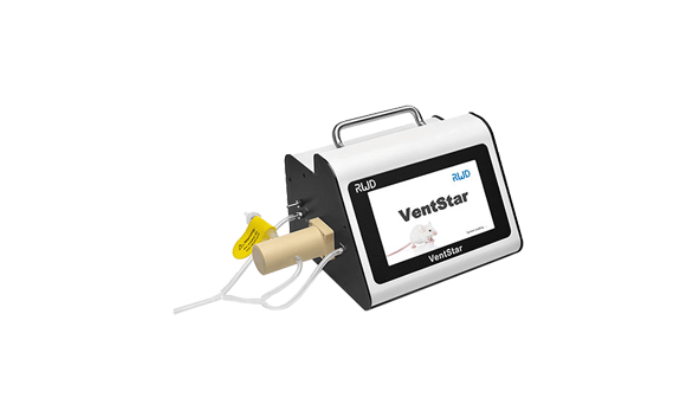
R415
-
Suitable for small animals such as mice, rats and guinea pigs within 10g ~ 1kg;
-
Advanced solenoid valve control, accurate air flow control and low noise.
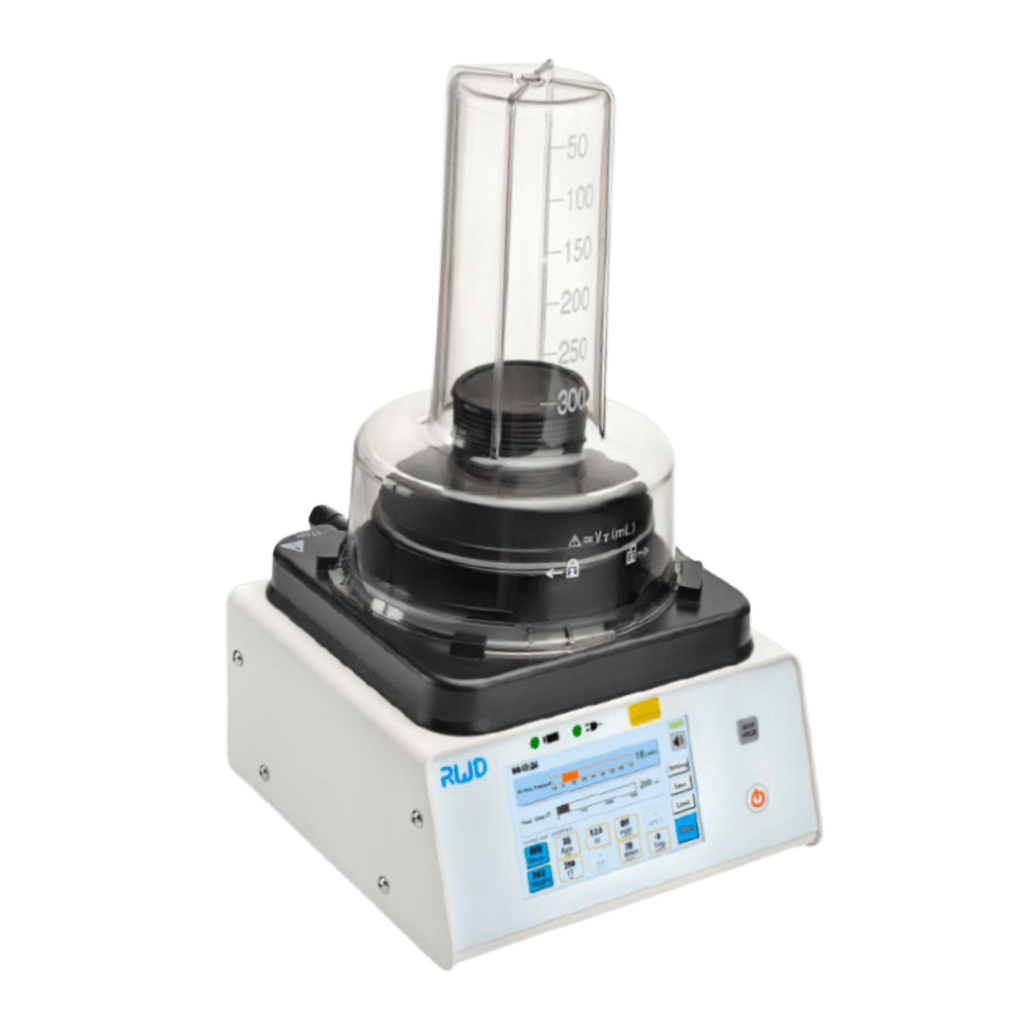
R419
-
Applicable to large animals within 2kg-100kg;
-
The air source needs to be driven and used in conjunction with the large animal anesthesia machine.
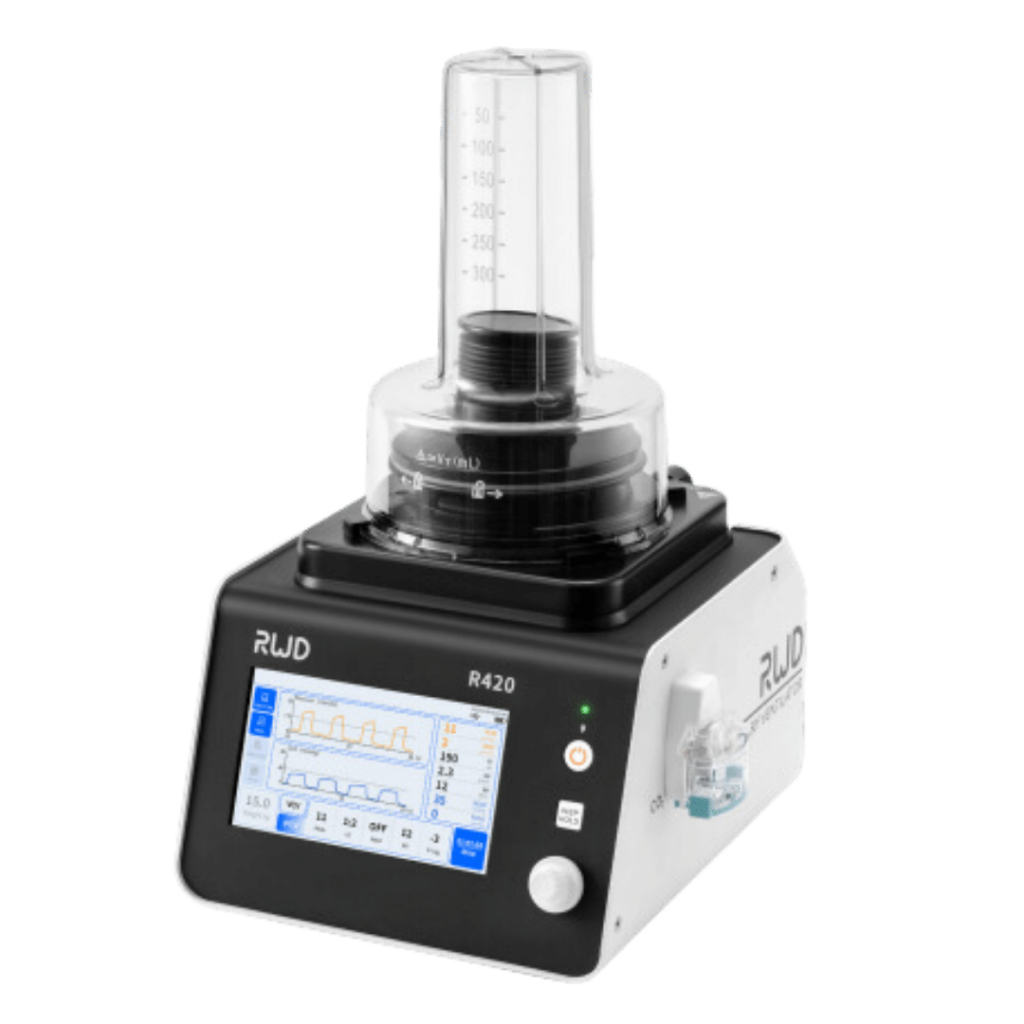
R420
-
Help veterinarians solve low SpO2 problems during surgery
-
Remote control of inspiratory hold: During a CT scan of the chest or abdomen, help the animal to hold the inspiration and complete the CT scan
-
Minimum tidal volume down to 4 mL,more friendly to tiny animals.
-
Accurate and continuous monitoring of respiratory status, such as airway pressure – time chart, minute volume, EtCO2, and etc.
-
Multiple alarms and clear handling prompts ensure the safety of mechanical ventilation
Features & Benefits
Enter weight auto matching breathing parameters
It is convenient for novices to quickly set breathing parameters, simplify operation and reduce the difficulty of use
Sigh function
It can avoid alveolar collapse atelectasis caused by long-term mechanical ventilation;
Save/Load function
1. It is convenient to save the respiratory parameters of different groups of animals when used by a single person;
2. When it is convenient for multiple people to use, the files are stored according to their respective experimental animal parameters
PEEP function
Setting up appropriate peep can improve the coordination between animals and machines;
Sound, text, error code alarm
Convenient and rapid troubleshooting, improve the human-computer interaction between the equipment and users, and improve the success rate of the experiment;
High ventilation accuracy control
It can better meet the ventilation of mice and other animals with small tidal volume, and the adjustment is more accurate.
Three ventilation modes
Pressure control is recommended for diaphragmatic hernia surgery, volume control is recommended for lung cavity tumors, and apnea mode can avoid prolonged recovery period;
LED screen displays various parameters
In the experiment, the current ventilation state can be observed through the screen column diagram, which is convenient to monitor the animal situation at any time
Turbo drive
Electronically driven by a high-per-
formance turbine, no more driven
gas
PEEP function
Help veterinarians solve low
SpO2 problems during surgery
Smart preset
Once inputting animal weight, smart
respiratory parameters can be called
up
Multiple alarms
Multiple alarms and clear handling
prompts ensure the safety of
mechanical ventilation
Remote control of
inspiratory hold
During a CT scan of the chest or abdomen, help the animal to hold the inspiration and complete the CT scan
Auto system leak test
Graphical guidance for quick start
Precise ventilation
Minimum tidal volume down
to 4 mL
Publications & Articles
Application Note: Measuring Coronary Flow Reserve
System Used: Doppler Flow Velocity System M-Series View Paper Here Background Coronary flow
Science Corner: Doppler Flow Velocity Imaging at Dr. Olgin’s Research Lab
Doppler Flow Velocity Imaging at Dr. Olgin’s Research Lab Dr. Jeff Olgin. “Dr.
Article review: “Effects of Isoflurane on Coronary Blood Flow Velocity in Young, Old, and ApoE−/− Mice Measured by Doppler Ultrasound”
Article review: “Effects of Isoflurane on Coronary Blood Flow Velocity in Young, Old,
